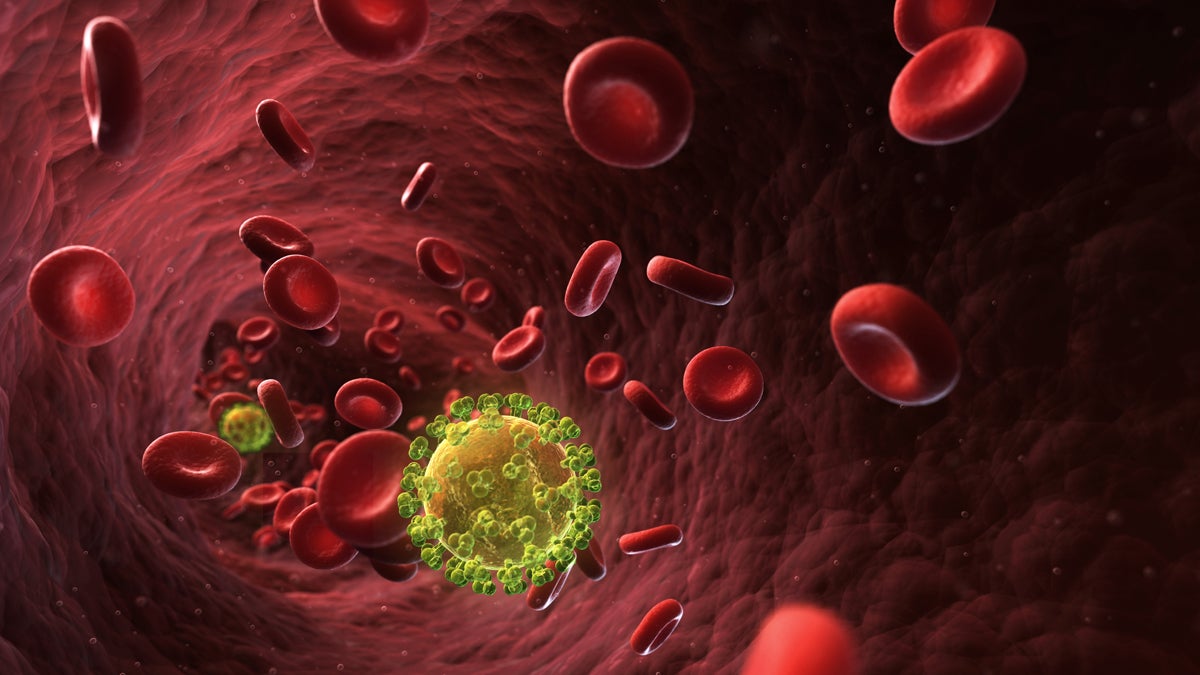Temple scientists edit out HIV from cultured cells
 Photo via ShutterStock) " title="shutterstock_128569862" width="1" height="1"/>
Photo via ShutterStock) " title="shutterstock_128569862" width="1" height="1"/>
(
Today’s antiretroviral drugs allow most HIV-positive patients to live long, full lives. But there’s still no way to get rid of the virus completely. In an early step to change that, researchers from Temple University have successfully eliminated the virus from human cells growing in culture.
The team, led by virologist Kamel Khalili, published their results on Monday in the journal PNAS.
The proof-of-concept experiments use technology borrowed from bacteria — it’s how they naturally fight off viruses — that’s been adapted for genome editing purposes only in the last several years.
Known as the CRISPR/Cas9 system, Khalili likens the approach to gene surgery. He said they could remove the entire integrated viral genome from cells by introducing an enzyme along with guide RNAs that recognize both ends of HIV DNA.
“Once both the enzyme and guide RNA are present in the infected cells, then the RNA hunts the viral genome, and the snipping enzyme takes over,” he said. “The result is complete eradication of viral DNA from the host cells.”
In one cell line with HIV integrated on two separate chromosomes, the method removed both copies. In another experiment, cells receiving the treatment appeared to be resistant to new infections by the virus, offering the intriguing possibility of a kind of immunization.
Paul Bates, a University of Pennsylvania virologist who wasn’t involved in the work, said the results are interesting, but remain preliminary.
To make it to a clinic, the hardest part will be figuring out how to get the treatment into all the cells where HIV is hiding, he said.
“We don’t even know exactly where the latent reservoirs reside, and they’re likely scattered and diverse in numerous cell types,” said Bates. “It’s the hurdle that any cellular targeted HIV therapy has had for the last 10 years, and it remains a hurdle.”
Compounding the problem is that for a real AIDS cure, HIV must be removed from every cell. If not, the virus will come back with a vengeance if typical drug therapies are stopped.
“It’s got to be essentially a perfect cure,” said Bates, “and that is exceedingly difficult to achieve.”
Another concern is if the guide RNAs match too closely the sequences of non-viral genes — and end up directing the snipping enzyme to cut at those locations by mistake.
While the Temple team did not report this to be a problem in its system, Bates said it’s hard to guarantee a high level of specificity. Such off-target effects could end up damaging genes important for cell function or result in translocations that might lead to cancer.
Khalili nevertheless remains optimistic and is working on a better delivery system to move the finding forward.
WHYY is your source for fact-based, in-depth journalism and information. As a nonprofit organization, we rely on financial support from readers like you. Please give today.

